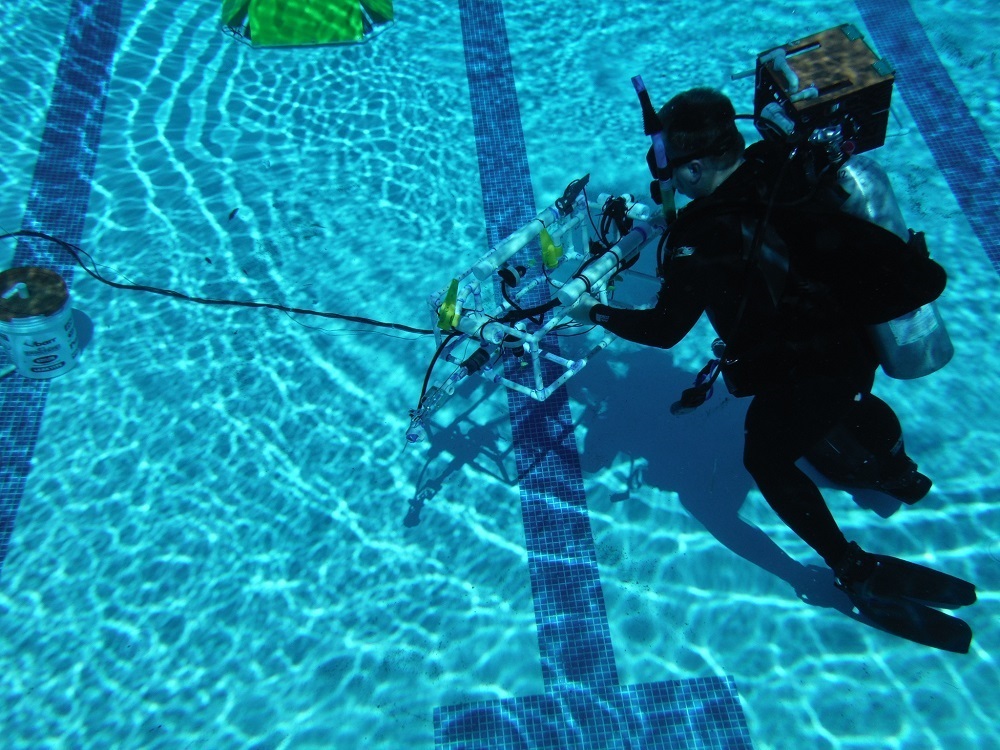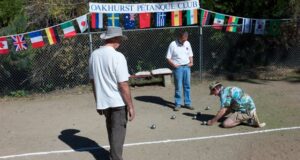Written by Eric Hagen
APTOS, CA — Excitement was in the air or was that the smell of solder? Hard to tell, as 18 students from Mountain Home School Charter (MHSC) and Glacier High School Charter (GHSC), competed for top honors in an annual underwater robotics contest for students in grades 5-12.
Sponsored by Monterey Peninsula College (MPC) and their Marine Advanced Technology Education Center (MATE), this was the 13th annual MATE Monterey Bay Regional Remotely Operated Vehicles (ROV) contest. Held in Aptos, California, mountain area student were representing for the 5th year.
Mountain Home and Glacier High students competed in two different “classes” of vehicles. The “Scout” class is usually made up of middle school and some high school teams. The “Ranger” class is mostly High School students with far more complex mission requirements.
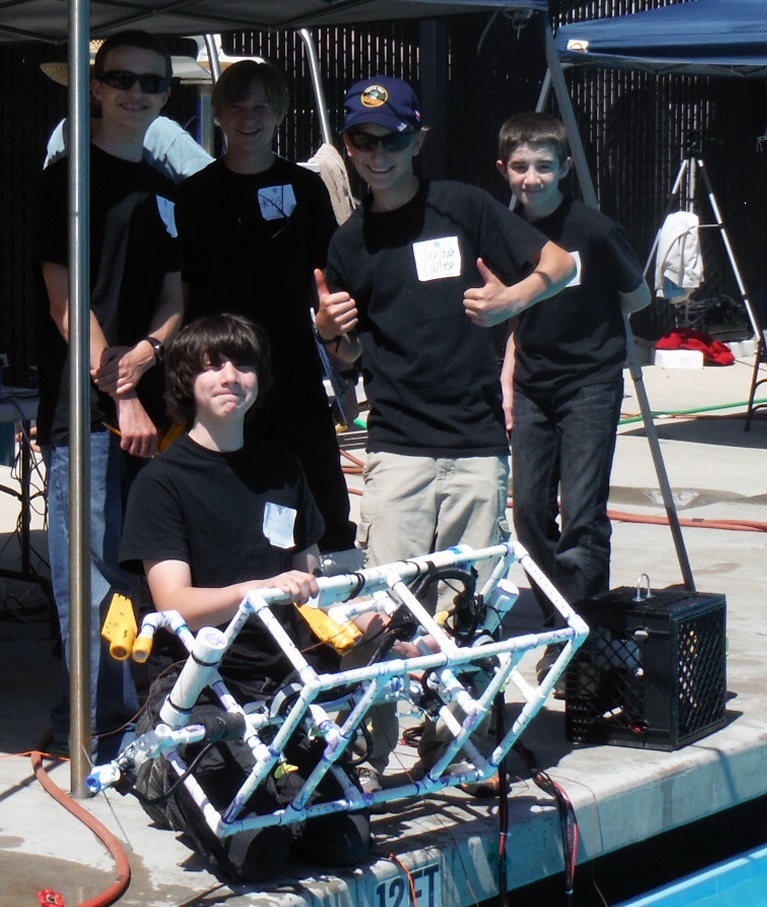 This was a year of firsts: the first time either school ever tried fundraising, and the first time that Aptos High School hosted the event. Also for the first time, all ROVs had to pass a safety inspection, and it was the first time the two schools have ever participated at the more advanced Ranger level.
This was a year of firsts: the first time either school ever tried fundraising, and the first time that Aptos High School hosted the event. Also for the first time, all ROVs had to pass a safety inspection, and it was the first time the two schools have ever participated at the more advanced Ranger level.
Another first was that the underwater “playing field” was leveled: Veteran Scout students could only compete with other Veterans, and Rookies (1st time students) would compete only with other Rookies. For several of the students this was the first time they have ever done anything like this.
The day began early Saturday morning with approximately 50 teams from all over California checking in. Judges conducted safety inspections, students set up display boards, and pilots tested their ROVs in the pool. Nerves were rattled as several teams discovered that their well-tested ROV was suddenly stricken with problems.
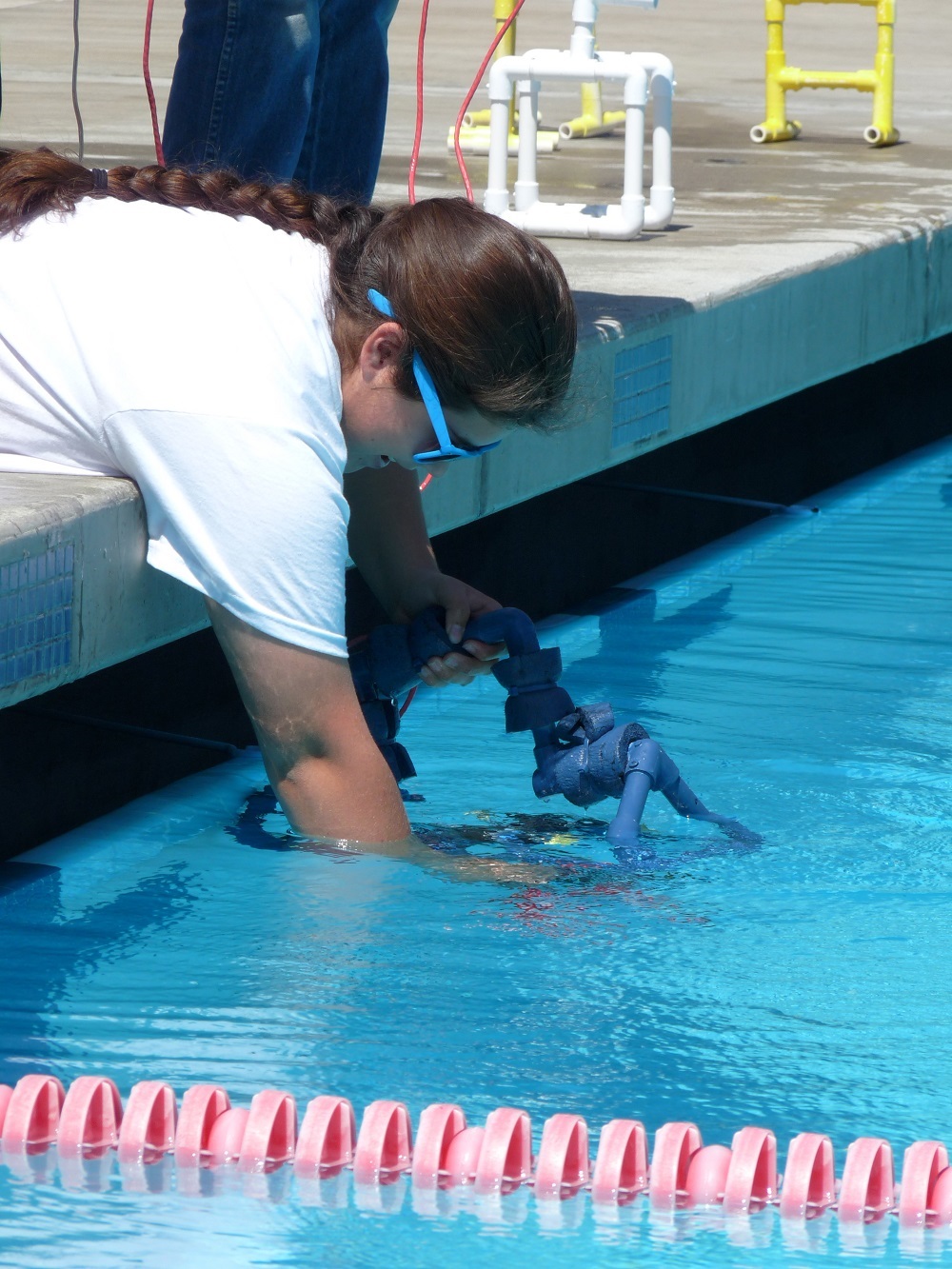 Quickly students diagnosed the electrical issues and furiously re-soldered connectors and fixed loose wiring in time for competition.
Quickly students diagnosed the electrical issues and furiously re-soldered connectors and fixed loose wiring in time for competition.
Glacier students were initially informed that their thermometer had passed safety inspection, and then they were told they could not use it. Fortunately they were able to find a way to make it work.
The MATE Center uses underwater robots as a way to get students excited about science, technology, engineering, and math (STEM), and to help them see the practical applications of these subjects.
GHSC teacher Matthew Englund says students’ primary benefit is seeing the development of a project from the very beginning.
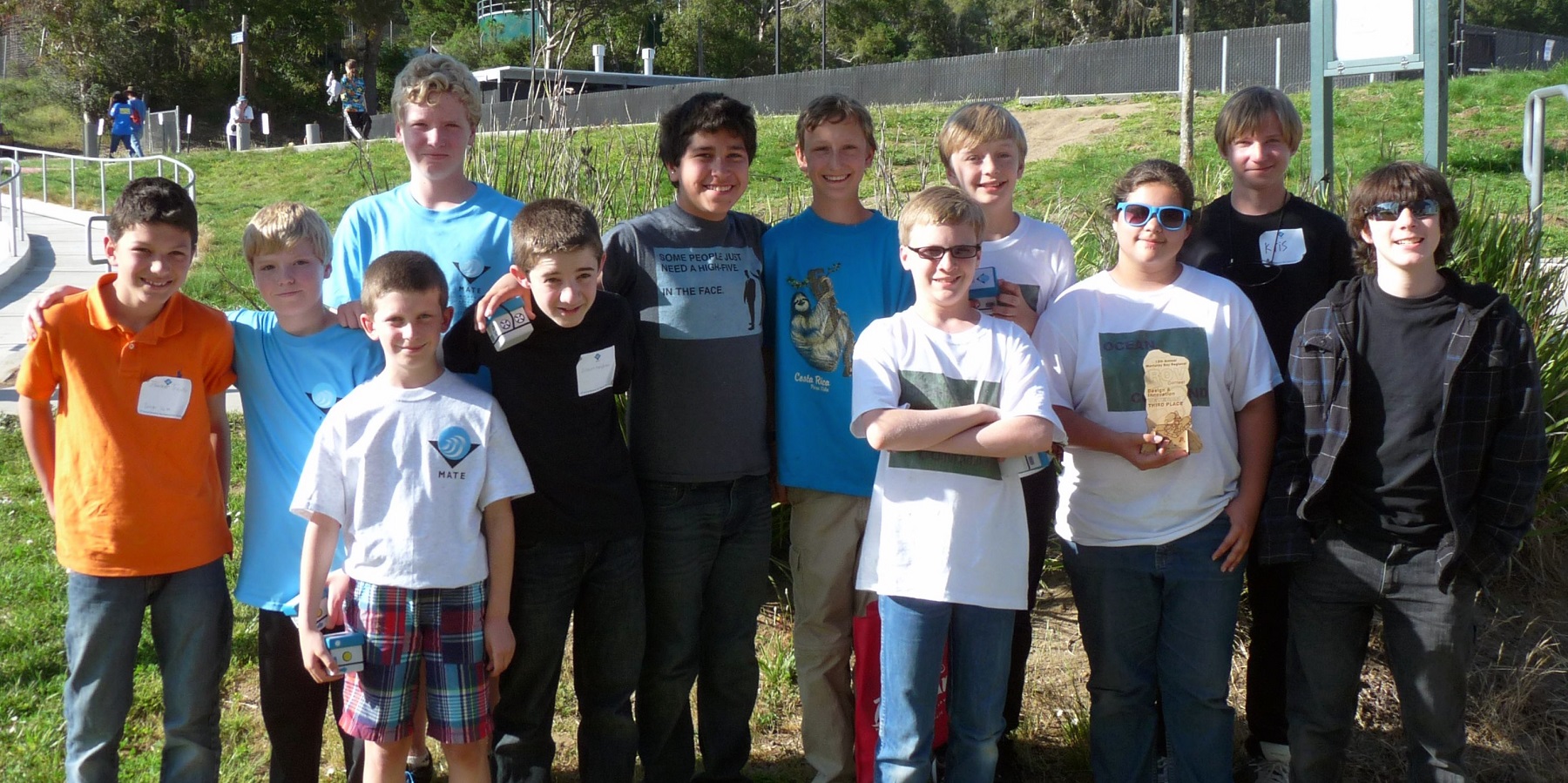 “This form of project-based learning directly integrates physical, chemical, biological, engineering and electronic principles,” Englund explains. “This year, some students started working out how to control the underwater robot with Arduino technology and computer programming so that a pilot can drive with a joystick.”
“This form of project-based learning directly integrates physical, chemical, biological, engineering and electronic principles,” Englund explains. “This year, some students started working out how to control the underwater robot with Arduino technology and computer programming so that a pilot can drive with a joystick.”
Arduino is a single-board microcontroller designed to make the process of using electronics in certain projects more accessible, including some ROVs.
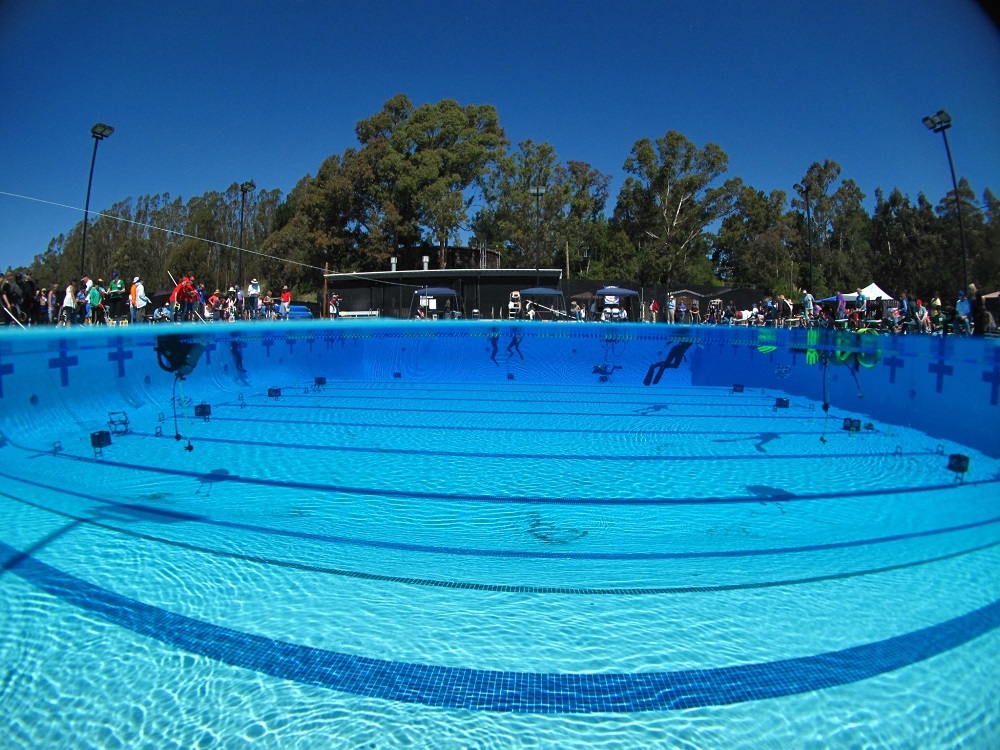 First-time attendee and GHSC student Steven Woods got involved because he had been interested in robots in general and this was one way to be involved with them. “I wanted something I would be building and programming on a higher level,” says Woods.
First-time attendee and GHSC student Steven Woods got involved because he had been interested in robots in general and this was one way to be involved with them. “I wanted something I would be building and programming on a higher level,” says Woods.
This year’s competition theme focused on the installation, operation, and maintenance of ocean observing systems. Students were challenged to specifically respond to a Request for Proposal (RFP) from scientists, engineers, and technicians at the University of Washington who are working on the development of a regional, cabled observatory on the Juan de Fuca oceanic plate in the Pacific Northwest.
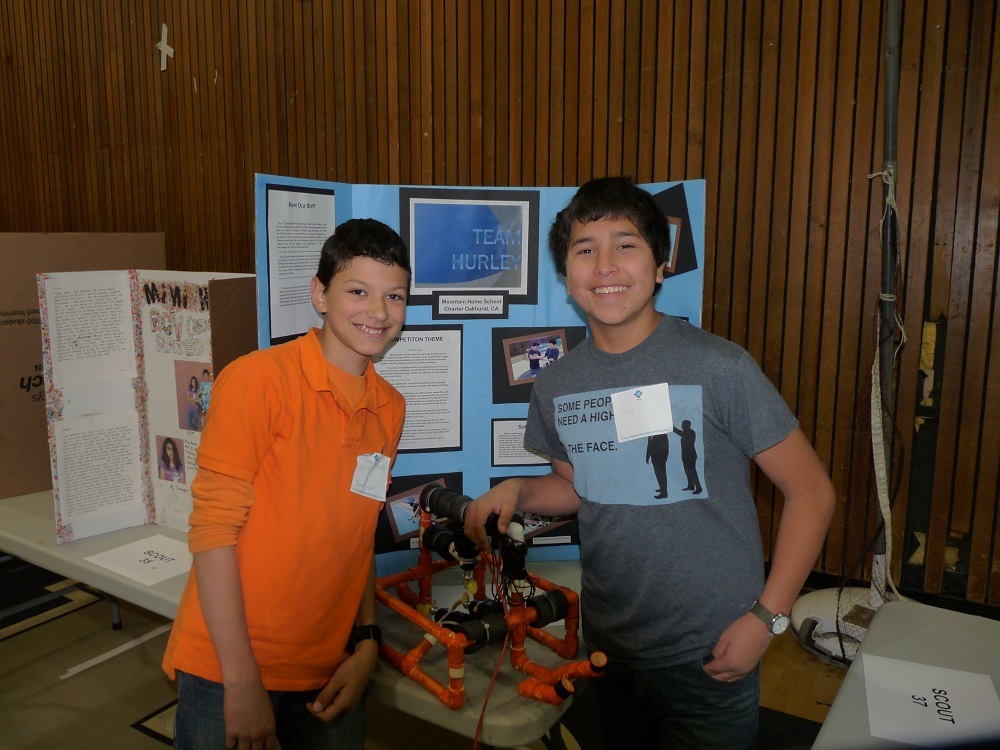 Students were asked to design and build from scratch an ROV that could retrieve and deploy new scientific instruments, remove bio-fouling organisms from existing equipment, take temperature readings and reconnect hubs, among other requirements.
Students were asked to design and build from scratch an ROV that could retrieve and deploy new scientific instruments, remove bio-fouling organisms from existing equipment, take temperature readings and reconnect hubs, among other requirements.
Instructors watched proudly as students collaborated, solving unexpected problems during the competition. I saw calm determination and confidence throughout the day. I smiled as I watched teams explain their ROV’s design, features, and ability to accomplish the missions.
Engineers asked careful questions of our students, checking for understanding of concepts ranging from buoyancy to circuitry. I watched as other adults and students engaged our students with questions and interest. How far each of them had come brought pride to teachers and parents alike.
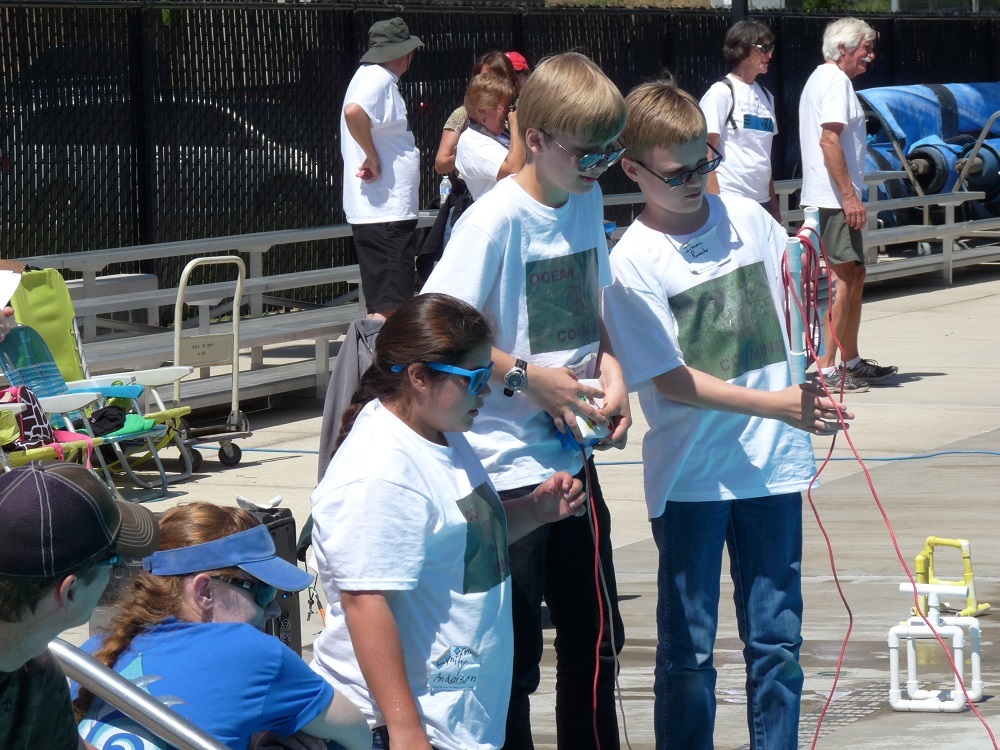 Time was of the essence, says GHSC student Kristopher Harkin.
Time was of the essence, says GHSC student Kristopher Harkin.
“The hardest part in preparing for the competition was building the ROV in the little time we had,” says Harkin, “after we were told what the mission would be. I learned a lot about my friends and teammates, a lot about ROVS, and how to better work with people who are very different from myself, in tight situations, especially.”
In the end, two teams received special awards from the MATE competition. Scout Team Ocean Command received 3rd place for “Design and Innovation,” recognizing the team’s overall ROV design and the response to questions about their projects posed by engineers.
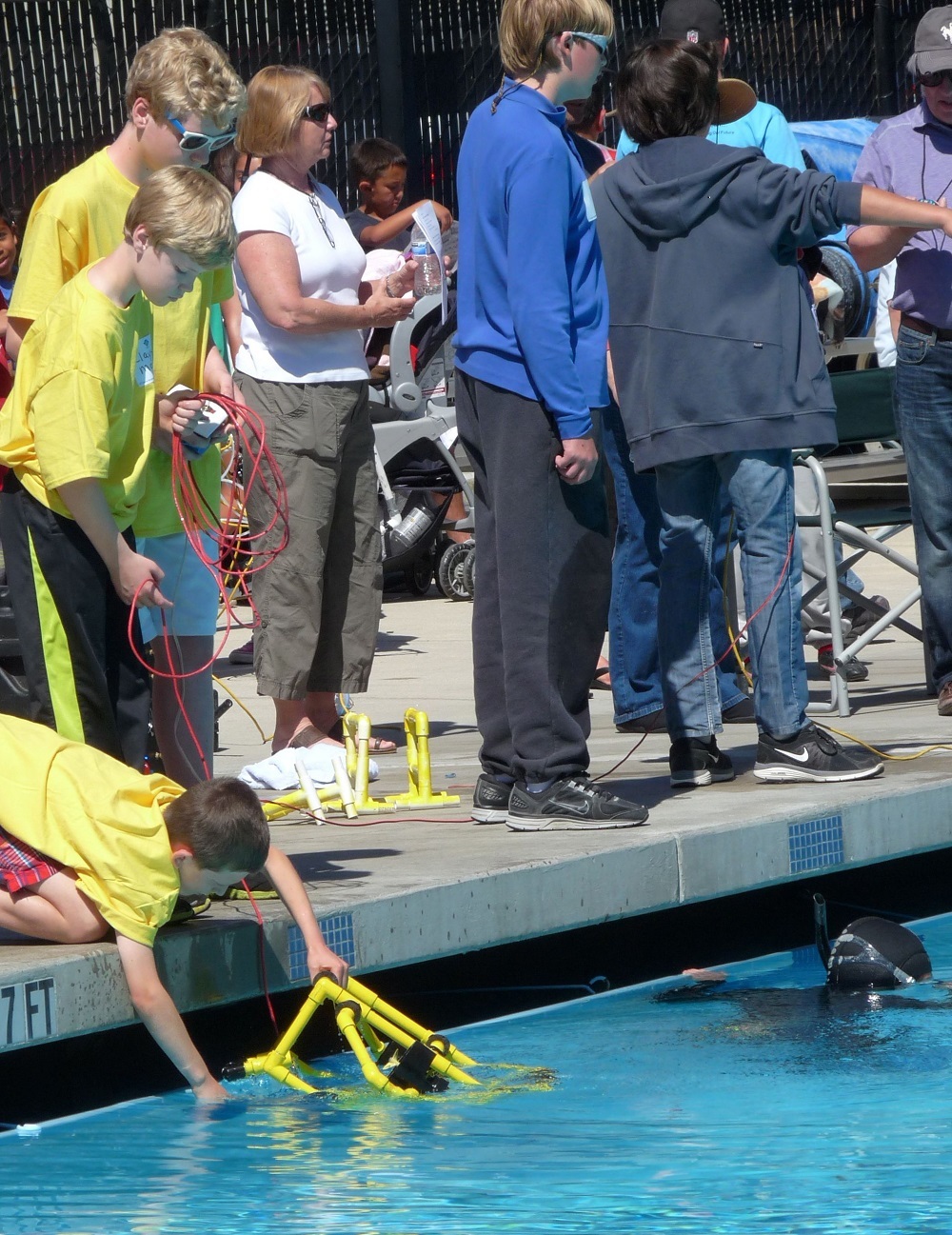 The Ranger team Ocean Dynamics, Inc. received the coveted “Guts and Glory” award for their unwavering perseverance throughout the competition. While facing numerous obstacles, Ocean Dynamics impressed the judges with their ability to move forward, ultimately solving each problem they faced.
The Ranger team Ocean Dynamics, Inc. received the coveted “Guts and Glory” award for their unwavering perseverance throughout the competition. While facing numerous obstacles, Ocean Dynamics impressed the judges with their ability to move forward, ultimately solving each problem they faced.
Second year MHCS participant Isaac Rumohr summed up the results nicely. “It was great winning something after all the hard work,” says Rumohr.
Winning these sorts of accolades does not come without help. MHSC and GHSC instructors appreciate the outstanding work of each student and thank parents for their support, along with all the other teachers and volunteers who helped prepare students and their ROVs for the competition.
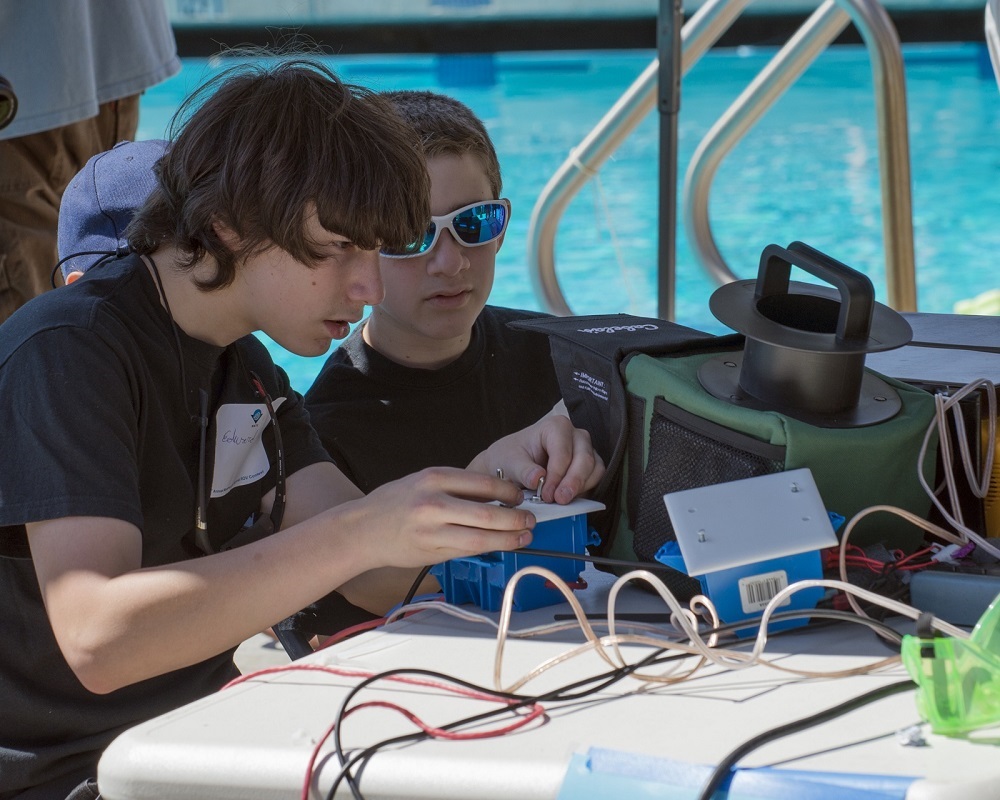 The Oakhurst Kiwanis Club awarded a mini-grant enabling the schools to move the program forward. The community at large purchased an enormous amount cookie dough, helping fund the work. Western Sierra Charter School Board is continually supportive, both financially and otherwise, while Yosemite High School allowed use of their pool for practice and testing.
The Oakhurst Kiwanis Club awarded a mini-grant enabling the schools to move the program forward. The community at large purchased an enormous amount cookie dough, helping fund the work. Western Sierra Charter School Board is continually supportive, both financially and otherwise, while Yosemite High School allowed use of their pool for practice and testing.
MATE is an amazing organization. We can’t wait till next year!
For more information, contact Eric Hagen: ehagen@mountainhomecharter.org
Eric Hagen is a teacher at Mountain Home School Charter
Scout Teams:
C Cubed – Veteran Team
1. Callen Moon, 7th
2. Clayton Moon, 6th
3. Connor Wallace, 7th
Ocean Command – Veteran Team
1. Emily Anderson, 7th
2. Connor Heidebrecht, 7th
3. Isaac Rumohr, 7th
Team Hurley – Rookie Team
1. Eben Hammond, 6th
2. Jonathan Trujillo, 7th
Ranger Teams:
Oceanic Dynamics Inc. from Oakhurst
1. Ed Firmalo – 9th
2. Kris Hawkins – 9th
3. Christian Mendoza – 9th
4. Walker Phillips – 9th
5. Justin Talley – 7th
Stark Enterprises from Kingsburg
1. Tim Bennett – 12th
2. Clay Schlund – 11th
3. Jeff Schlund – 11th
4. Jonathan Severns – 9th
5. Steven Wood – 10th

